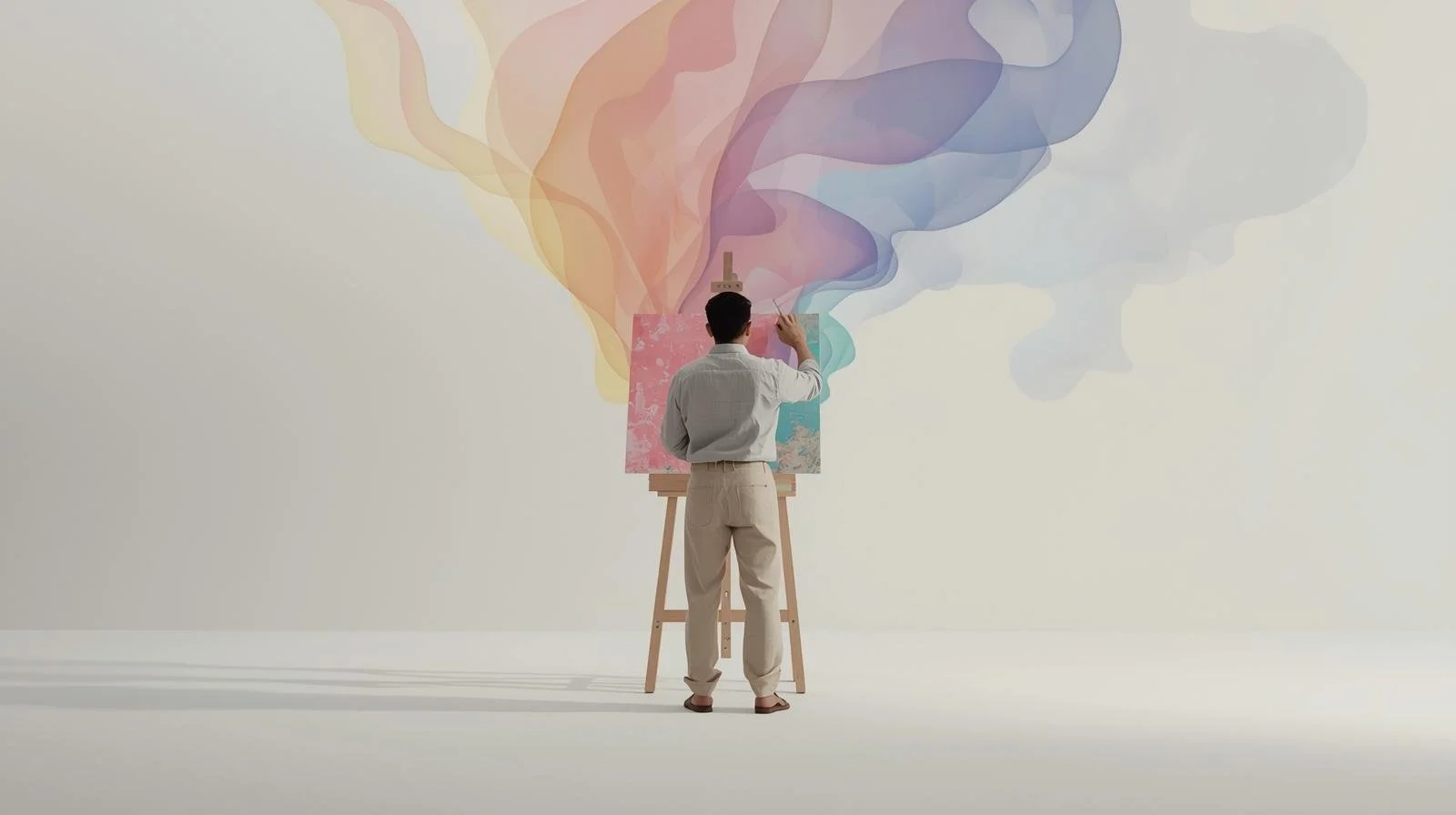How Art Helps Us Process Trauma
By Xavier Lin-O’Hara | Art Therapist
When Words Aren’t Enough
There are things the body remembers that language can’t touch.
When trauma lodges itself in the nervous system, it scrambles time. You feel safe but your body doesn’t believe you. You try to explain, but the words come out sideways.
That’s where art steps in — not as decoration, but as translation.
Art therapy isn’t about making something beautiful. It’s about making something visible.
The Body Keeps the Memory
Trauma doesn’t stay neatly in the past. It hides in the muscles, the breath, the startle reflex. It shows up in sleeplessness, tension, or the sudden urge to flee when nothing’s chasing you.
Neuroscientists like Bessel van der Kolk call this somatic memory — the way trauma bypasses language and lives in sensation. That’s why talk therapy can feel incomplete: you’re trying to describe something that doesn’t speak in words.
Art gives the body a voice.
When you paint, sculpt, dance, or even doodle, you move emotion from implicit to explicit memory — from raw feeling into shape and symbol. That act of externalizing helps the brain integrate what was once unspeakable.
What Happens in the Brain
When you create art, your amygdala (the fear center) quiets, while the prefrontal cortex — responsible for reflection and meaning-making — activates.
It’s not escapism; it’s rewiring.
You’re literally helping your brain process emotional fragments into coherent story.
A study in Frontiers in Psychology found that 45 minutes of creative activity significantly reduced cortisol levels, even in participants with no artistic background.
It’s biology catching its breath.
Art as a Safe Witness
Trauma isolates. Art reconnects.
You don’t have to share what you make — the canvas witnesses for you.
You can rip paper, smear paint, draw symbols that no one else understands. The process itself becomes language.
In clinical settings, art therapists call this “symbolic distance” — enough space between the creator and the memory that you can approach it safely.
Sometimes the paper holds the grief until you’re ready to.
Different Mediums, Different Messages
Painting or Drawing — Releases emotion through movement and color.
Collage — Reclaims fragments into wholeness, ideal for rebuilding after loss.
Sculpture or Clay — Provides grounding; tactile work brings awareness back to the body.
Music or Dance — Mobilizes stored energy; turns freeze response into flow.
There’s no wrong medium — only one that speaks your nervous system’s language.
How to Begin on Your Own
Start Small — 10 minutes, a pencil, and a page. Let your hands move faster than your thoughts.
Create Without Judgment — Ugly, messy, chaotic — good. That’s how emotion looks in translation.
Pause for the Body — After creating, sit quietly and notice your breathing. Feel what shifted.
Seek Support When Needed — Art can surface old pain. Working with a therapist ensures you stay anchored.
Grounding Reflection
You can’t rewrite what happened, but you can reimagine your relationship to it.
Art doesn’t erase memory — it teaches your body a new way to hold it.
Every brushstroke is a nervous system learning that expression is safer than silence.
Author Bio
Xavier Lin O’Hara is an art therapist who helps individuals process trauma through expressive arts and somatic awareness. His work bridges neuroscience, symbolism, and emotional repair.
*Guest contributions reflect the personal experiences and perspectives of their authors. While every piece is reviewed for quality and respect, the ideas shared may differ from the views of Josh Dolin. Readers are encouraged to take what resonates and leave the rest.

